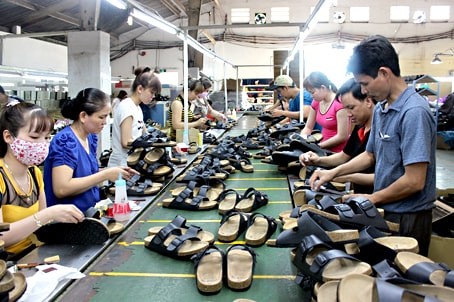
CPTPP exerts positive impact on Vietnamese exports: Insiders
Latest
 |
| Viet Nam's footwear products enjoy comparative advantages in the CPTPP market. |
Statistics indicate that Vietnamese exports to CPTPP partners throughout last year recorded an average of 7.2% growth in comparison to 2018’s figures, while imports enjoyed a slight increase of 0.7%.
Most notably, the country’s exports to emerging markets within the CPTPP recorded an impressive growth of between 26% and 36%.
The trade deal is widely viewed as an effective means to pave the way for local exports to directly enter markets such as Canada and Peru within the Americas, whilst indirectly penetrating markets where the CPTPP has yet to come into force, such as Chile.
Nguyen Cam Trang, deputy director of the Import and Export Department, pointed out that due to their small scale, local firms have encountered numerous difficulties in improving overall product quality and competitiveness while exporting domestic farm produce.
Trang went on to underscore the importance of joining the trade pact as it can help businesses increase their export turnover, improve the local business climate, and enhance standards of goods.
She, therefore, urged the Government to fine-tune the legal framework on business and investment environment in a bid to facilitate the operations of firms, alongside ramping up communication campaigns.
Meanwhile, Nguyen Thi Thu Trang, director of the Center for the WTO and Integration Centre, pointed out that during the initial two years of implementing the trade pact, the state has made some institutional reforms in line with the terms of the deal. Indeed, these reforms are still not clear on how to fully take advantage of opportunities brought about by the CPTPP and other FTAs.
A recently conducted survey shows 55.26% of enterprises state the CPTPP has had a clear impact on tariffs, while only 18.42% of respondents note other factors such as intellectual property rights and protection rights under the trade pact have witnessed modest changes. In addition, 25% of enterprises say the business environment has seen significant improvements.
Despite these figures, Trang said the majority of local firms, 75.27% in total, have acquired a limited knowledge of the CPTPP and its benefits in relation to tax incentives. For foreign-invested enterprises, they have chosen to take advantage of the benefits of other FTAs as opposed to the CPTPP.
The CPTPP and other FTAs are anticipated to create economic recovery momentum for businesses in the post-COVID-19 period. They provide firms with opportunities to participate in the global value chain and improve the domestic business environment, Trang added.
The official, therefore, called on managers to assist local firms to gain greater insights into real opportunities brought about by the trade pact as several companies have faced hurdles in terms of competitive capacity, internal strength, and capital resources as they deploy plans to welcome the CPTPP.

















